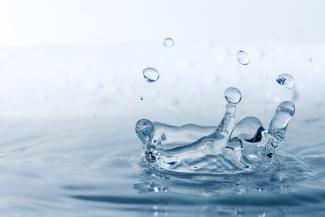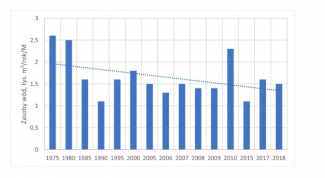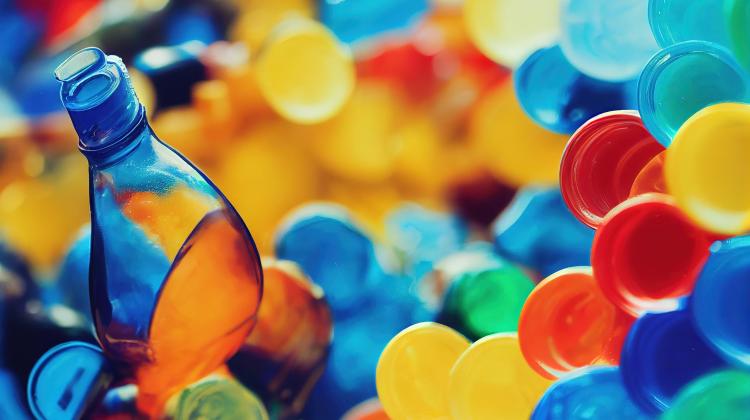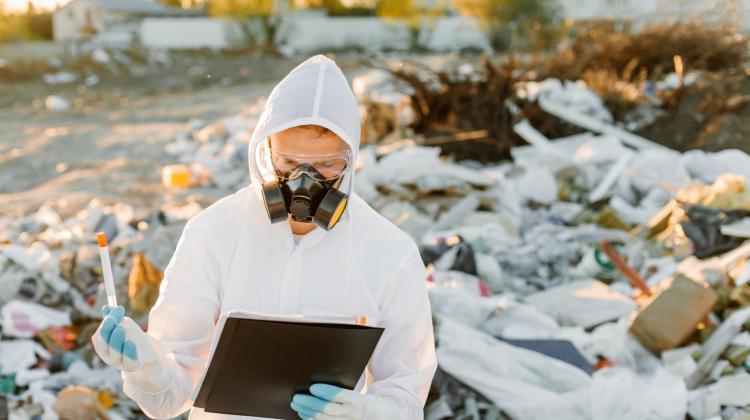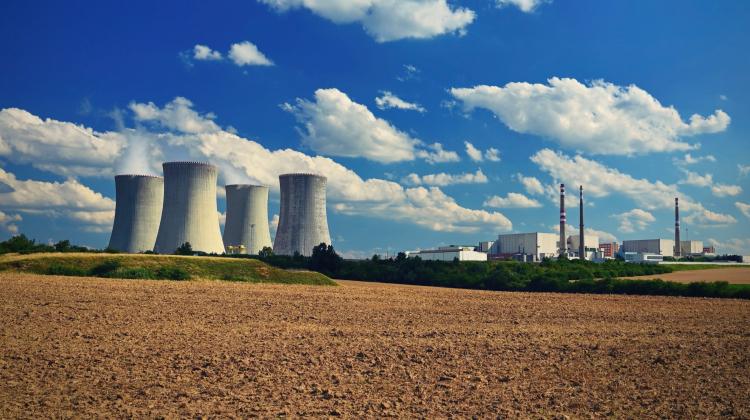Access to sources of clean, healthy water is a prerequisite for the survival of any civilization and any human being, as well as any living organism. The role of water in human life cannot be overestimated, which is why a resolution of the United Nations General Assembly states that "the right to safe, clean drinking water and sanitation is a necessary right to enjoy life and human rights to the full". Other documents of this organization contain, among others, the following "Water is a precious and indispensable good of every human being..." and water pollution is "...a harmful act against all life...".
These words take on special meaning in countries poor in water resources. They include Poland. Surface water resources in our country, currently slightly over 1 500 m3/inhabitant/year, are among the smallest in Europe. Out of 46 European countries, only three have water resources smaller than Poland - these are Malta, Cyprus and ... the Czech Republic. Among experts in water management there is a common belief that the amount of water resources at the level of 1 500 m3/inhabitant/year is an absolutely lower limit, allowing for safe satisfaction of the needs of the population and economy in an average developed European country. Poland is balancing on this edge and in a situation when, e.g. due to climate change, the amount of precipitation in our country decreases, we are threatened with a serious water deficit.
It should be emphasized here that surface water resources depend on climatic conditions, so they are variable - in the years when more precipitation is recorded (the so-called "wet" years) surface water resources increase, while in the years when there is a lack of precipitation - the indicator of water quantity per capita in our country decreases. This variability is illustrated by the chart below, which shows the changing index of surface water resources in Poland over the last 40 years.
Fig. 1. Indicator of surface water resources in Poland in 1975 - 2018 (in m3/inhabitant/year - based on Statistics Poland data).
The graph presented in Fig. 1 shows that in 1990 and 2015 there was an exceptionally low amount of precipitation in Poland, so surface water resources decreased to a very low level: 1 100 m3/inhabitant/year. There were also periods of heavy rainfall over the past 40 years, thanks to which water resources were replenished. However, this is not a reason to be satisfied - the chart presents a trend line, determined on the basis of data on surface water resources in Poland over the last 40 years. It clearly indicates a decreasing trend, which means that surface water resources in Poland are becoming smaller and smaller. If this trend, caused by climate change, continues over the next 30 years, we are threatened with a serious deficit of water resources.
It should be emphasized that along with climate changes, the nature of precipitation also changes. More and more often we are dealing with precipitation that runs very rapidly and lasts relatively shortly. These are the so called "heavy rainfall", which, in contrast to long term rainfall, of moderate intensity, provides a lot of water, but in a short time. This results in a significant loss of water, which does not manage to soak into the ground and quickly flows into rivers and canals. In this way, the so-called retention, i.e. the phenomenon of retaining rainwater in the soil and in small water reservoirs, is reduced, so where it can be effectively used e.g. in agricultural production or to supply drinking water intakes.
Summarizing the above mentioned issues related to the scarcity of surface water resources in Poland, it should be stressed once again that :
- the surface water resources are very small,
- it is likely that over the next 20 to 30 years, due to climate change, the available surface water resources will decrease,
- the change in the nature of precipitation from continuous to rapid (inflammable) will further worsen the already low rainwater retention rate.
What can and should we do to ensure that the water deficit in Poland does not increase and does not cause deterioration of our quality of life?
First of all, we must take care to protect our water resources: they must not be degraded, polluted or used in a way that threatens their exhaustion. Secondly, we should improve the quality of existing water resources, repair the bad condition of water inherited from the period of chaotic, robbery use of these resources in the years 1960 - 1990. Thirdly, we should manage the existing resources sparingly, i.e. save water.
The above general directions of activities can be reduced to local and individual initiatives. What can and what should each of us do in order to economically manage and protect water resources?
The water consumer uses it directly, in the household, but - and this is also very important - we use water in an indirect way, almost imperceptibly. This is about our (often bad) consumer habits, associated with unreasonable buying of products that use huge amounts of water or energy to produce them. For example, producing 1 kg of paper requires as much as 70-100 kg of water (70-100 dm3), and producing 1 kg of beef consumes as much as approx. 15 000 dm3 of water. To produce 1 kWh of electricity requires 3-4 dm3 of water (for comparison - one kWh of electricity is consumed by playing games for 2 hours on a desktop computer equipped with a strong graphics card or baking for half an hour in a 2 kW electric oven, e.g. a piece of beef tenderloin). Unmoderate consumption (and waste) of water- and energy-consuming products and food indirectly contributes to depletion of modest water resources available to Poland.
Besides, each of us directly uses water in our household. On average, we use about 120-150 dm3 of water per day (per capita), and the amount of water we use for specific activities is listed in the following (in dm3 per day, per capita):
- drinking and preparing meals 3 - 5,
- washing dishes 10 - 14,
- bathing in a bathtub 60 - 80,
- shower 20 - 25,
- flushing the toilet bowl 30 - 45,
- laundry 15 - 20,
- cleaning, floor cleaning 5 - 8.
The data contained in the above mentioned data show that the highest water consumption occurs during rinsing of the toilet bowl and during bathing in the bath. So instead of a bathtub, it is worth using a shower enclosure at home, thanks to which we can significantly reduce water consumption.
We must also realize that the amount of water used in the household is influenced not only by the necessary consumption but also by water losses. They are caused by leaks in water supply equipment and water waste resulting from unnecessary water consumption. The most common cause of losses are leaking toilet cisterns or dripping taps. A cistern dripping for a month can cause the loss of 10 - 15 tons (m3) of fresh, healthy water!
In the light of the above mentioned arguments, a number of recommendations can be formulated with regard to our consumer habits, thanks to which we will manage water in a more economical and rational way. With such actions we can contribute to the protection of water resources. These recommendations are well known, but here we remind you of them once again and strongly encourage you to follow them:
- we should use water-efficient devices in the household,
- seal taps and flushes (clean and replace gaskets), eliminate any water leaks,
- tighten taps when brushing teeth, shaving, do not wash dishes under running water,
- give up frequent bathing in the tub, use the shower instead,
- when assembling the toilet bowl cistern, select a two-chamber cistern or a cistern with a button that regulates the amount of flushing water ("stop" function),
- choose technical devices that reduce water consumption at home (e.g. aerators on taps),
- start the laundry only when you have a fully filled washing machine and also start the dishwasher only when you have a full chamber,
- do not waste food, for which we use huge amounts of water,
- do not use disposable items,
- to use and disseminate water and energy-saving technologies and products.
The above mentioned actions and ways of proceeding will reduce the risk of water shortage and depletion of water resources, resources which we have so little in Poland.


